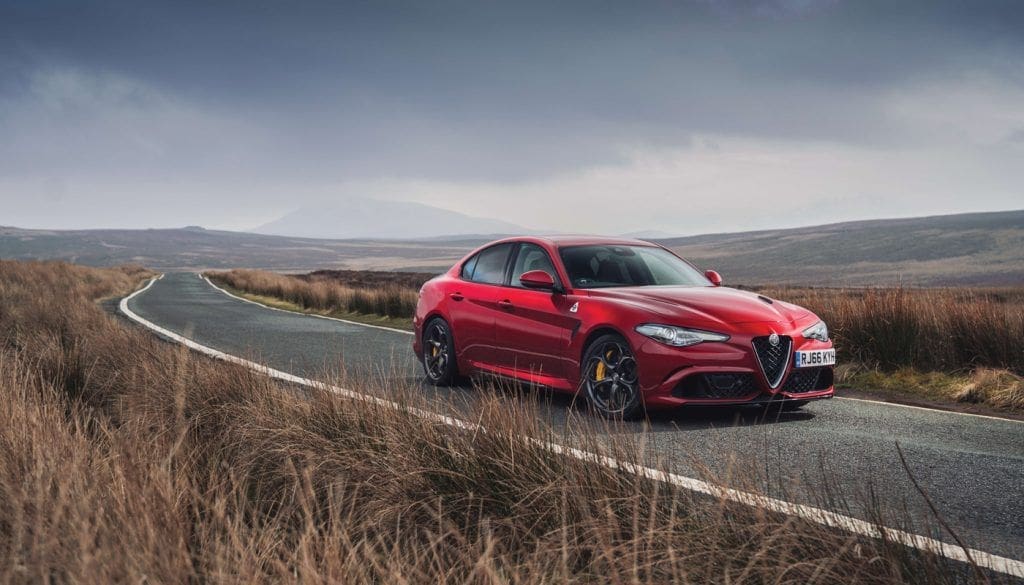Alfa Romeo Giulia – An Italian Renaissance
There’s absolutely no doubt in my mind about the love that surrounds Alfa Romeo. Despite, or maybe even because of, its faults and quirkiness, it’s a brand that inspires great passion and desire. Of course, that’s not without just cause: both design and performance are there with abundance. Mind you, it’s fair to say that over the years it’s been a very involving brand, with many owners often seen in garages ‘tinkering’ under the bonnet.
Over recent years, it’s been slim pickings for the Alfisti when it comes to new models to choose from – but all that is beginning to change. A couple of months back I attended the NZ unveiling of the new (and much anticipated) Giulia, a 4-door sedan that is steeped in ‘Alfa-ness’. From its very Italian good looks, through to its dynamic driving experience (even oozing technology advancements), the Giulia is undoubtedly well worth the wait. However, leering at a static display car (and watching a video of the Quadrifoglio’s record-breaking lap time at the Nurburgring) is one thing, but (as I have just found out) seat time behind the wheel is another thing altogether.
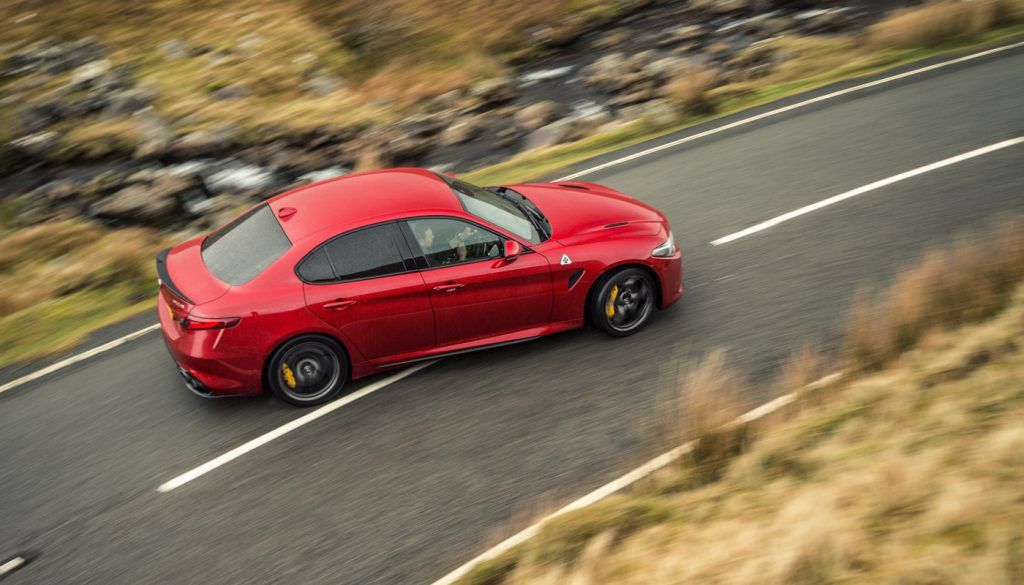
The day began at Palazzo Italia Newmarket (a restaurant that boasts great food, cooking classes and an Italian market) for an ‘involved’ breakfast. I say involved as we literally had to make the Colazione Dolces (Sfoglia, Cornetti farciti, Treccia al Cioccolato etc) ourselves. They were delicious, but not as sweet as the Giulias parked outside. We had both the Veloce (Ve-lo-chay) and the Quadrifoglio (the ‘g’ is silent) warmed up and waiting for us, but first, a recap of what to expect.
Project Giorgio (Alfa’s rebirth) began in 2013. Working from a blank piece of paper, eight people were given the mission to bring an entirely new Alfa platform to market within three years and, as 2016 rolled into 2017, Giulia was born.
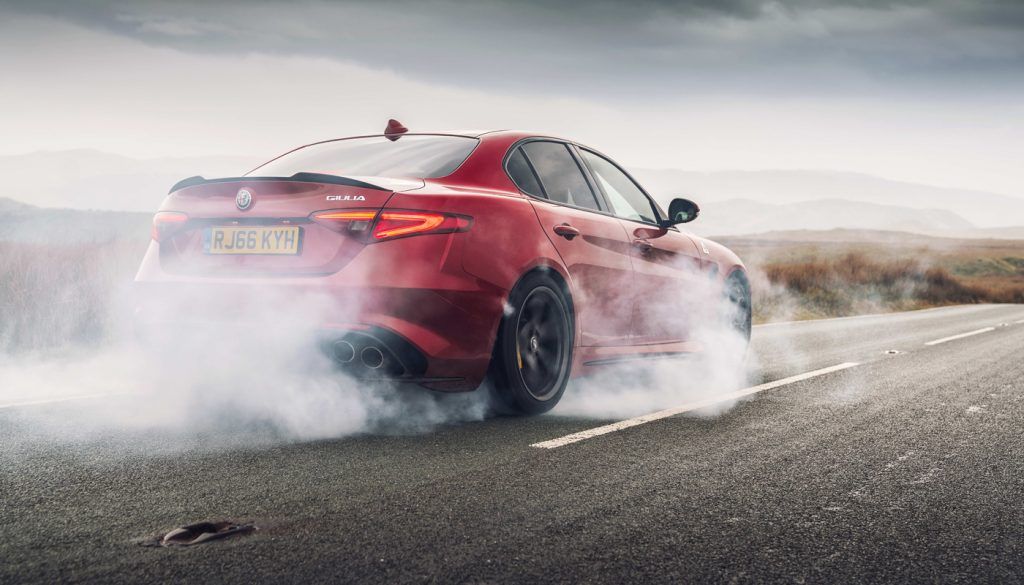
With its iconic Alfa Romeo grille and badging, slim eyes with LED make-up and very bold/athletic, racy appearance on the outside and an interior that fawns over her owner, the Giulia is indeed very eye‑catching.
With a lighter frame (and with the Quadrifoglio loaded with carbon fibre and aluminium) she tips the scales at a mere 1500 kilograms. Giulia’s got the smarts too: 8.8-inch infotainment screen, adaptive cruise control, brake-by-wire, collision mitigation, radar and video… I could, of course, go on, but breakfast was nearly over and we were itching to get on the road. As luck would have it, I was handed the keys to a Competizione Red Quadrifoglio for my first drive – bellissimo! Once I had electronically adjusted the figure-hugging sports bucket seats, I poked at the push-button start (a big red button on the leather and alcantara steering wheel) and brought the 2.9L V6 BiTurbo engine roaring into life (and with it, an exhaust note that I never got tired of). The Quadrifoglio has a reported 0-100km/h time of 3.9 seconds that I could well believe and 375kW/600Nm of power/torque that you spend a lot of time reining in – think ‘Italian Stallion that you are constantly stopping from bolting away’, but not in an uncomfortable fashion, it’s more ‘eagerly awaiting the right moment’ anticipation.

When the time comes, and you can stamp down on the go-faster pedal, the revs launch north, the exhaust baffles clear and (in the right environment) the active Aero Front splitter works its magic adding 100kgs of downforce to the car… that’s more than 200 kilograms with me, breakfast and the splitter combined! The result is a most excellent and engrossing drive. Giulia has three ‘DNA’ driving modes. Dynamic, Natural and Advanced Efficiency (plus Race with the Quadrifoglio – but this is best left for the track). In A, you wouldn’t know, but Giulia cleverly goes about her business on three cylinders – how very efficient, but I spent most of the time in Dynamic – why wouldn’t I?
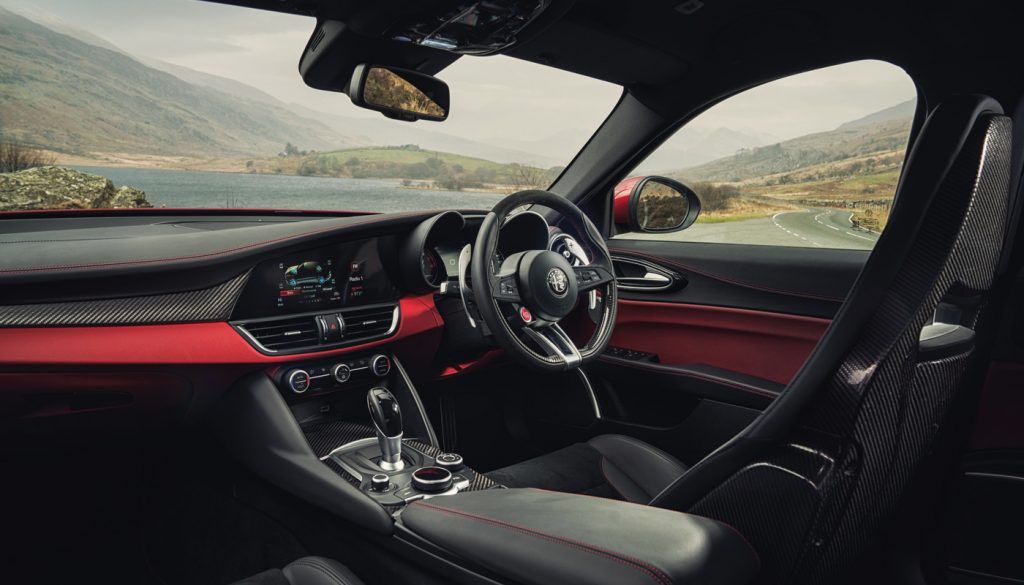
Car change put me behind the wheel of the Veloce in Monte Carlo blue. As expected, this is a more sedate and softer ride, but it still has plenty of poke. The 2L turbo produces a very admirable 206kW/400Nm and will move from 0-100km/h in 5.7 seconds. It’s a genuine 5-seater and the rear seats fold down for extra cargo space. Far from being a let down after the Quadrifoglio, the Veloce is more of a daily driver that offers both style and function and also has a smile-inducing open road ride. A small note – both cars could do with a larger reversing camera screen.
Lunch was held at Ascension Wines, and in a very Italian fashion, there were sharing plates of antipasto followed by surf and turf platters, my belt groaned in anticipation – I still managed to eat, though – and consoled it with the thought of more downforce for the Giulia.
Eating over, I grabbed the keys to the Quadrifoglio for the straight drive back to Auckland. Although I would have been happy in either, we had to go through the Orewa tunnel, which meant open exhaust V6 sound – in hindsight, we should have spent several hours doing just that – it would have been well worth the toll fee.
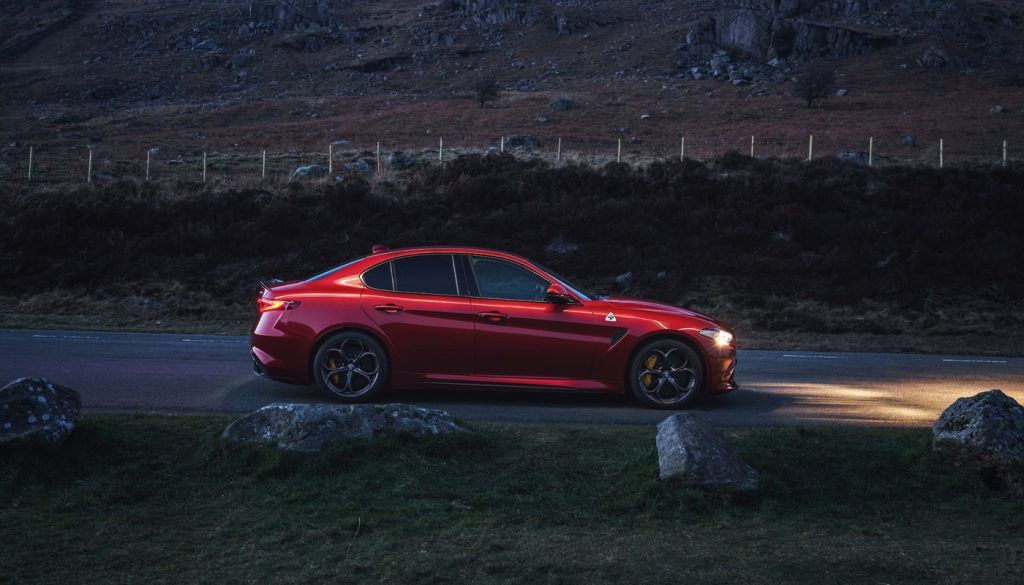
As part of Alfa’s new approach to the modern automotive world, the brand has focused on quality control. From the automated/robotic production facility to the three separate (factory, importer and dealership) road tests, Alfa Romeo is ensuring Giulia gets to you in perfect health. If the Giulia is anything to go by, Project Giorgio has been more than simply a success; it really has proven to be a new lease of life to a very well-established and much-loved automotive brand. The Giulia retains the style and head-turning presence that makes Alfa Alfa, but with its all-new engine, technology and approach to quality perfection, it is sure to revitalise the old-school attraction and garner new interest from drivers of other marques. One small point, though, with less need to tinker, what will the hardcore Alfisti do with their extra time? May I suggest cooking lessons at Palazzo Italia?
Viva the Renaissance!

